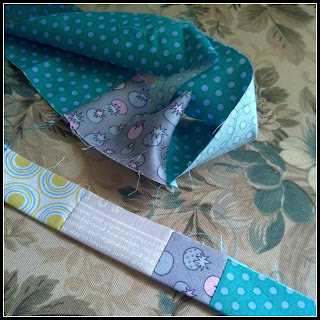I recently adopted (yea I'm a bit crazy) a pretty little girl named Florence. She's a petite little thing and has a lot of spunk.
A singer featherweight 221, and I am so luck to have her! My husband found the listing on E-bay and at only $150.00 we couldn't pass it up. The seller said that the motor hummed, but didn't say anything about sewing. This had us a bit concerned but we took the chance anyway.
When the box arrived I pulled the machine out and was amazed by the condition.
Florence is in great shape all except for one blemish in the paint on the fold up bed of the machine. Of course there are pins scratches, this is normal for older sewing machines.
All the decals are in excellent shape, hardly any wear. I can't say the same for the case, it's in very bad shape.
I plugged it in and fearfully pressed the foot peddle, the motor hummed but the machine sewed very slow almost not at all. After inspecting the motor by removing the belt I found the motor ran great. I put the belt back on and checked the belt tension again I tried sewing - still slow very labored almost. After 30 minutes of fiddling I discovered the bobbin winder was tightened down onto the belt and keeping the belt from moving freely. Yes, she sews!!! Amazing something so simple was the issue.
She has a Centennial Badge which I found means "Singer, rightfully proud of its company history, decided to celebrate its centenary in 1951 by giving all machines made that year a special badge. This was the standard Singer emblem of the time but with the inscription "A Century of Sewing Service 1851-1951" around the outside of the oval.
These "limited edition" models made for only one year are becoming increasingly difficult to find. Most have 1951 serial numbers but authenticated models with 1948 to 1952 serial numbers have been located - suggesting that the company held vast stocks and simply badged machines just prior to dispatch. The Centennial Featherweights are mechanically identical to the standard 221 - and only the badge identifies them cosmetically." I found the info here.
The serial number dates the machine around the end 1950, if you want to date a Singer machine
Singer Co is the place to go!
I have been researching the care of Singer Featherweights, not only the basic maintenance but the repair and restoring of these beautiful machines. I spent the day yesterday taking apart the motor because I didn't read before oiling the machine and put oil in the motor grease ports - a BIG NO NO!! Never ever put anything but Singer Lubricant in the grease ports, oil can end up varnishing the commutator (a fancy word for the guts of the motor) and permanently ruin the motor.
I will post pictures tomorrow on the cleaning of Florence's motor and the links to all the great internet resources I used to do this.
Right now I've got the put the binding on that '
Secret Scrap Swap Item'.
Happy sewing!

















